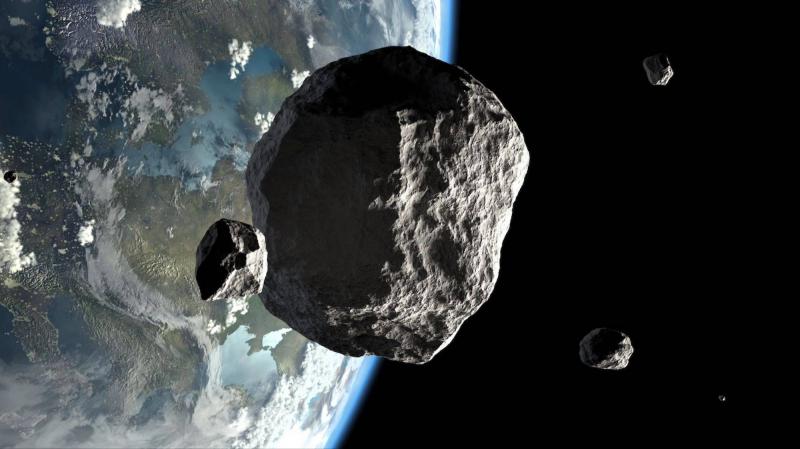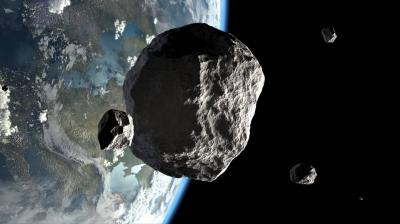There are an estimated 1.1 to 1.9 million asteroids in the asteroid belt of the solar system, a vast expanse of space rocks located between Mars and Jupiter. Sometimes, the orbits of some of these asteroids can be altered due to the immense gravity of Jupiter and occasional encounters with Mars's gravity. These events can eject asteroids from the main belt and send them into space in various directions, including towards Earth.
In this regard, the Canary Islands Institute of Astrophysics (IAC) is recently studying an asteroid known as "2023 FY3," which is heading towards Earth at a tremendous speed and is expected to collide with our planet. According to data, asteroid "2023 FY3" is on a collision course with Earth and could hit our planet within the next hundred years, according to scientists. The asteroid was discovered in April 2023, and researchers from the Canary Islands Institute of Astrophysics and the Complutense University of Madrid (UCM) recently published their findings in the journal Astronomy & Astrophysics.
They found that although the size of the asteroid does not pose a significant threat, its trajectory resembles that of other asteroids headed towards Earth. Dr. Raúl de la Fuente Marcos, a researcher at the Complutense University of Madrid, stated, "We are particularly interested in asteroids that range from 100 meters to one kilometer in size, as they could cause regional damage in the event of a hypothetical collision." He added, "Now that we know its surface composition, we have a fairly accurate idea of its size. We know it rotates quickly, which means we can classify it as a potential fragment of a larger asteroid, and we also know it has undergone orbital resonance with our planet." (Orbital resonance occurs when two orbiting bodies exert periodic gravitational influence on each other.)
The asteroid is five meters long, and although this is relatively small for an asteroid, it does not negate the fact that it is heading towards Earth at a very high speed, as reported by the newspaper Express. Due to its distance from the Sun, the average speed of asteroids exiting the asteroid belt ranges from 17 to 25 kilometers per second, which translates to an astonishing speed of 38,029 miles (61,201 km) to 55,925 miles (90,000 km) per hour.
"2023 FY3" was observed during monitoring operations conducted using the Gran Telescopio Canarias, a powerful large-aperture telescope capable of studying the smallest space rocks. It took two months to analyze the results before publishing the data to the public. Scientists believe that "2023 FY3," which is part of "Aten asteroids" (asteroids with Earth-like orbits and orbital periods approximately equal to one Earth year), could collide with Earth over the next century. It is noteworthy that "2023 FY3" is not the only asteroid on a collision course with Earth; many asteroids are expected to approach us before the next hundred years.




